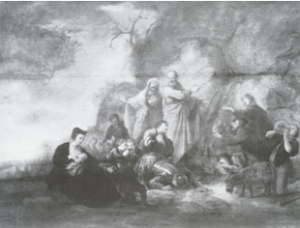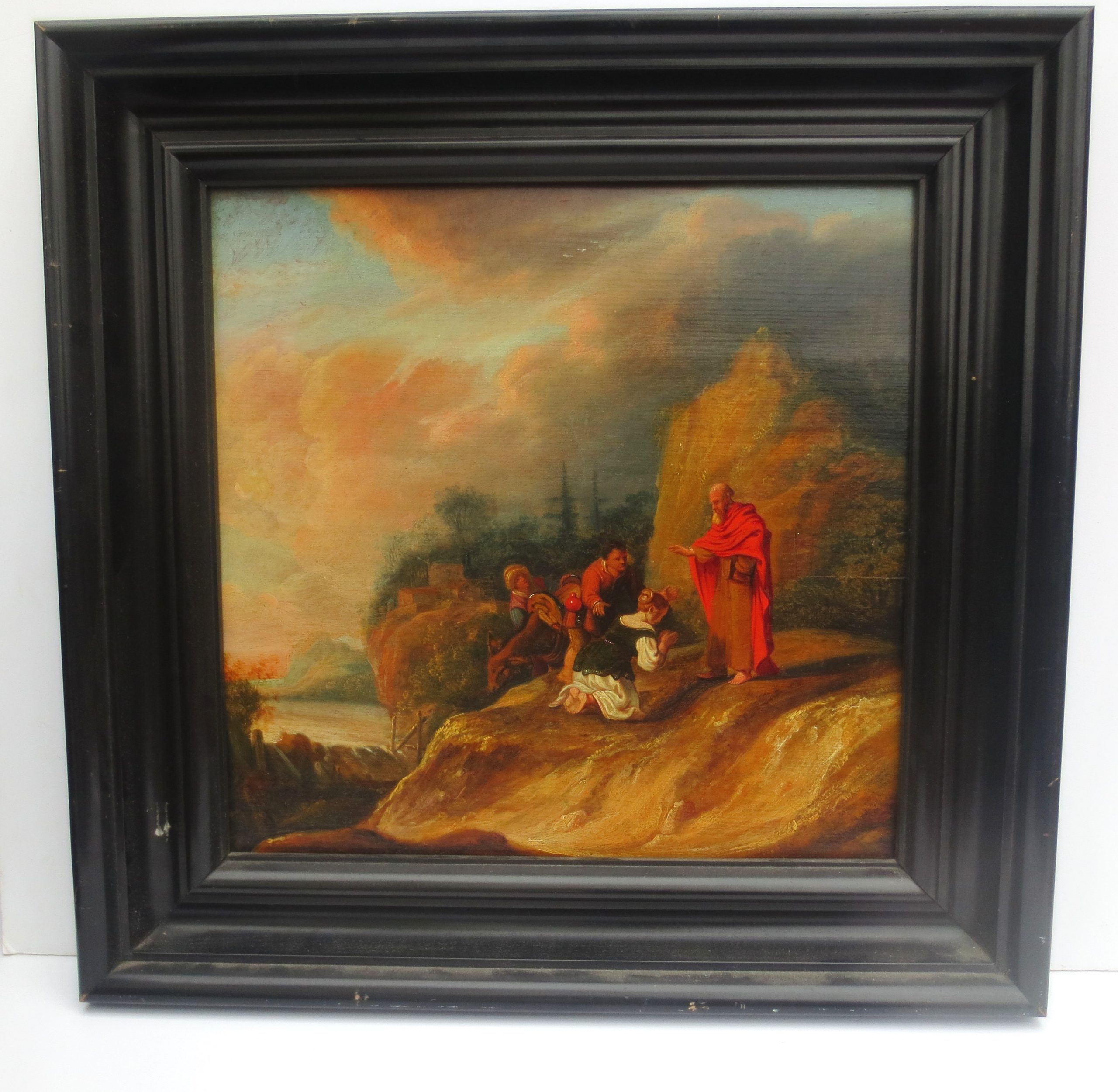Typical of de Wet’s compositional template during the 1640s and early 1650s, the enacted subject is compacted middle left before a dark landscape backdrop; an open light area to the left offers a deep and selectively detailed vista. The same general schema can be seen in approximately coeval paintings of the Expulsion of Hagar in Amsterdam (1646; fig. 1):

the Israelites Gathering of Manna in Calke Abbey (National Trust; dated c.1650-54; fig. 2)

Moses Striking the Rock in a private collection (Sumowski, Gemälde der Rembrandt-Schüler VI, nr. 2482; fig. 3, in proper sense)

John the Baptist Preaching, Lempertz auction, present location unknown; fig. 4).

His figures are all well drawn, demonstrably active and occasionally quoted from a Rembrandt painting, as the kneeling figure at Moses’ feet in fig. 3, copied from Rembrandt’s repentant Judas in the near ubiquitous copies and paraphrases of his Judas Returning the Thirty Pieces of Silver.
REFERENCE:
Werner Sumowski, Gemälde der Rembrandt-Schüler, vol. IV, Landau,1983, pp. 2723-2733, and catalogued illustrations of paintings by Jacob I, his son Jacob II, his less gifted artistic Doppelgӓnger Gerrit de Wet and their wider circle Amsterdam and Leiden; with older literature on the artist.
Eric Jan van Sluijter, Rembrandt’s Rivals: History Painting in Amsterdam 1630-1650, Amsterdam-Philadelphia, 2015, pp. 205-207 and passim s.v. for ample information and illustration of work both by de Wet and the larger artistic orbit of painters influenced by the pre-Rembrandts and the young Rembrandt’s small history paintings.
Friso Lammertse, “Gerrit Uylenburgh, Art Dealer and Painter in Amsterdam and London,” in Friso Lammertse and Jaap van der Veen, Uylenburgh & Son: Art and Commerce from Rembrandt to de Lairessse 1625 -1675, Zwolle 2006.

